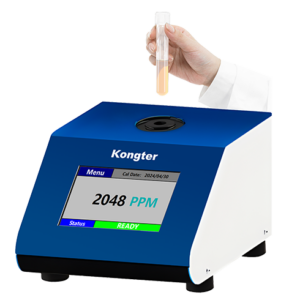Several international standards and guidelines relate to the use and application of ferrous content analyzers, particularly concerning the monitoring and analysis of oil and other fluids for wear particles. These standards ensure consistency, reliability, and accuracy in detecting and measuring ferrous particles, which is critical for maintenance and operational purposes in various industries.
Relevant International Standards:
- ISO 4406:2017 – Hydraulic Fluid Power: Fluids: Method for Coding the Level of Contamination by Solid Particles:
– This standard provides a method for coding the level of contamination in hydraulic fluids based on the number of particles present. It is widely used for condition monitoring and maintenance of hydraulic systems.
- ISO 11500:2020 – Hydraulic Fluid Power: Determination of the Particulate Contamination Level of a Hydraulic Fluid Power System:
– This standard specifies methods for determining the particulate contamination level of a hydraulic fluid system. It includes procedures for sampling and analyzing the fluid to detect contaminants, including ferrous particles.
- ISO 21018-3:2008 – Hydraulic Fluid Power: Monitoring the Level of Particles in the Fluid: Part 3: Use of Particle Counter with the Light Extinction Technique:
– This part of ISO 21018 specifies the use of particle counters using light extinction techniques to monitor particle levels in hydraulic fluids, which can include ferrous particles.
- ISO 16232-3:2007 – Road Vehicles: Cleanliness of Components and Systems: Part 3: Method of Extraction of Contaminants by Pressure-Rinsing:
– This standard is relevant for the automotive industry, focusing on the cleanliness of components and systems. It provides methods for extracting contaminants, including ferrous particles, for analysis.
- ASTM D7690 – Standard Test Method for Monitoring Diesel Fuel Cleanliness Using a Laser Particle Counter:
– While specific to diesel fuel, this ASTM standard provides guidelines for using particle counters to monitor fuel cleanliness, including the detection of ferrous particles.
- ASTM D6971 – Standard Test Method for Measurement of Heterogeneous Particles in Lubricating Greases:
– This standard outlines methods for measuring heterogeneous particles in lubricating greases, which can include ferrous particles resulting from wear.
Best Practices and Guidelines:
– Sampling and Testing Procedures:
– Follow standardized procedures for sampling fluids to ensure consistent and accurate results. Proper sampling techniques are crucial to avoid contamination and to get representative samples.
– Calibration and Maintenance:
– Regular calibration and maintenance of ferrous content analyzers are necessary to maintain their accuracy and reliability. Adhere to manufacturer guidelines and relevant standards for calibration intervals and procedures.
– Data Interpretation:
– Use standardized codes and methods, such as those provided in ISO 4406, to interpret data from ferrous content analyzers. This ensures consistent reporting and comparison of contamination levels.
– Documentation and Reporting:
– Maintain detailed records of testing, including methods used, calibration data, and results. This documentation is essential for traceability, compliance with standards, and effective maintenance planning.
Industry-Specific Guidelines:
– Aerospace:
– Comply with industry-specific standards and regulations for aircraft maintenance and monitoring, such as those from the Federal Aviation Administration (FAA) and the European Union Aviation Safety Agency (EASA).
– Automotive:
– Follow automotive industry standards for fluid cleanliness and contamination monitoring, which may include ISO and SAE (Society of Automotive Engineers) standards.
– Power Generation:
– Adhere to standards and guidelines from organizations such as the International Electrotechnical Commission (IEC) for monitoring and maintaining power generation equipment.
By adhering to these international standards and best practices, industries can ensure the effective use of ferrous content analyzers for monitoring and maintaining the health of their equipment, leading to improved reliability, safety, and operational efficiency.
The Kongter FCA-2000 Ferrous Content Analyzer is the right solution to meet all these measurement standards.

